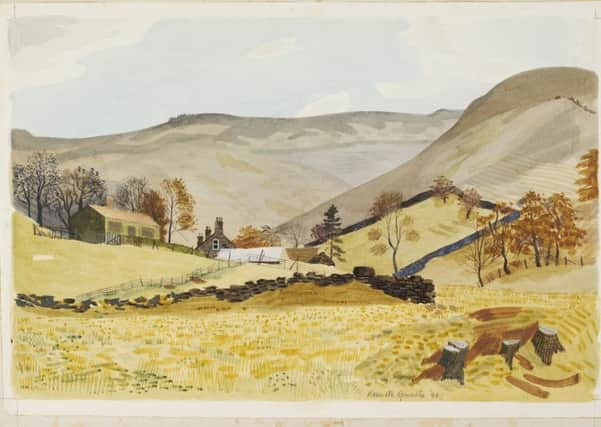Remarkable wartime art project comes to Sheffield


In the early days of the Second World War an extraordinary project was started that is a fine example of the power of art to pull a nation together.
Recording Britain was launched in 1939 and was the brainchild of art historian Sir Kenneth Clark, father of the late Conservative MP and infamous diarist Alan. The initiative saw more than 90 artists commissioned to create inspiring watercolour pictures that would be “sympathetic records” of vulnerable buildings, landscapes and lifestyles. The idea was to remind the British people – at a time of national crisis – of their rich natural, cultural and architectural heritage.
Advertisement
Hide AdAdvertisement
Hide AdBy the time the scheme ended in 1943 more than 1,500 pictures, chronicling the changing face of Britain, were in the collection. The exhibition toured around the country during the war years as a way of boosting morale and in 1949 transferred into the care of the Victoria and Albert Museum in London where it has been looked after ever since. Now the collection is back on the road again and a selection of around 70 of the works comes to Sheffield’s Millennium Gallery next week. “It is going to various regional venues,” says curator Lucy Cooper. “And it is coming here partly because of our ongoing partnership with the V&A and also we felt this particular exhibition would be popular with our audience because of its relevance to Yorkshire and Derbyshire.”
There are several works in the exhibition by Yorkshire-born artist Kenneth Rowntree. One painting holds particular resonance for a Sheffield audience. Grainfoot Farm, Derwentdale, Derbyshire, 1940 depicts a farm building in a Peak District village that was about to be ‘drowned’ in the creation of the new Ladybower reservoir. “I am particularly looking forward to seeing that picture,” says Cooper. “And to tie in with that we have made a film, which will be in the exhibition, about the submerged villages of Derbyshire.” Another of Cooper’s personal highlights is John Piper’s The Tithe Barn. “It is a painting of an ordinary rural building but he made it look like a grand piece of architecture.” There is a wide range of style and approach in the collection and this is reflected in the selection on display in Sheffield. “There are some quite unusual ones,” says Cooper. “There is a picture by Michael Rothenstein which is a landscape with old traditional cottages in the background but in the foreground is a tree that has been blasted by lightning. He is trying to bring in very subtly the idea of war and destruction.” The exhibition includes a number of works from Sheffield’s own collection exploring the tradition of watercolour painting from the 1700s through to the 20th century.
The V&A have also brought in contemporary works which relate to the theme of pastoral landscape. “There is a piece called Protest House that will challenge visitors expecting relatively ‘safe’ pictures of the English landscape,” says Cooper. “And there is a wonderful Tony Ray-Jones photograph of Glyndebourne that makes us think about how we value our landscape and how we use it.”